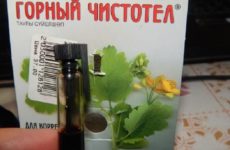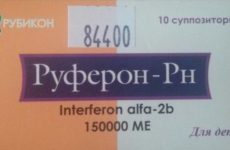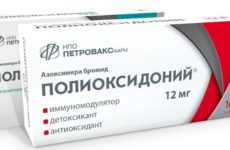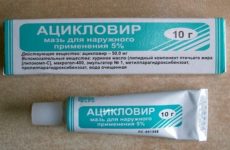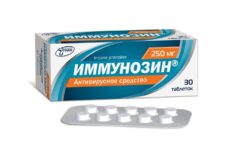A unique natural factor of human internal protection – the substance interferon (from the English. Interference, barrier, obstacle) was discovered in the 60s. XX century.
Since then, preparations based on these organic substances have been used to treat serious viral diseases (herpes, hepatitis) and even serve as an antidote to the development of malignant tumors.
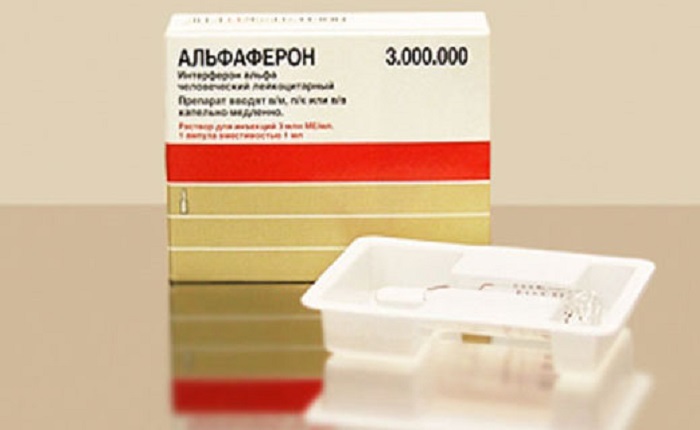
The mechanism of action of Alfaferon, its intended purpose, methods of application and main contraindications will be discussed in the next article.
Содержание:
- 1 Characteristics of the drug
- 2 The effectiveness of the drug
- 3 Indications and dosage
- 4 Instructions for use
- 5 Side effects
- 6 Overdose
- 7 Contraindications and precautions
- 8 Interaction with other drugs and alcohol
- 9 Terms and correct storage
- 10 Holiday conditions
- 11 Means analogues
- 12 Feedback from doctors and patients
Characteristics of the drug
Medicines based on interferons – substances-defenders, are conventionally divided into several groups:
- alpha-interferons – treatment of hepatitis and other severe viral diseases;
- beta-interferons – therapy for multiple sclerosis;
- gamma interferons – use in autoimmune pathologies.
The composition of the drug
1 ampoule of solution (1 ml) contains:
- the main active ingredient is leukocyte interferon-alpha (prepared from donor human leukocytes) – 3 or 6 million IU;
- sodium chloride;
- sodium phosphate dodecahydrate;
- water for injections.
Dosage form
Alfaferon is available in the form of a solution for injection, packaged in transparent glass ampoules of 3.6 million IU, 1 ml. Ampoules are located in plastic packaging-cells; packaging – cardboard box.
The preparation must be accompanied by an instruction containing basic information on the use, dosage, possible negative consequences, the manufacturer, the terms of use.
pharmachologic effect
- has an antiviral effect even in slightly administered doses (directly blocks the reproduction of pathogenic viruses in the body);
- immunomodulatory effect – increasing the immunity (resistance) of the body to infection;
- an increase in the activity of cells of the immune system (increases the ability of unaffected cells to resist the penetration of infection);
- stimulates the metabolism of the cell itself (changes in the cytoskeleton and cell membranes);
- contributes to the change and stability of the properties of the cell membrane (activates endoribonuclease, destroys viral RNA, prevents its duplication and spread, deactivates viral protein synthesis);
- antitumor effect (stimulates the activity of antigens, suppresses and delays the growth of various tumor processes).
The mechanism of action on the HPV virus
Papillomavirus (HPV) is a family of infectious agents-viruses that reproduce inside the cell. More than 27 species and about 600 subtypes of papillomaviruses have been registered by the International Taxonomy Committee.
After a clinical examination, based on the results of colposcopy, biopsy, cytological studies, tests to determine the type of virus, a special therapy is prescribed to eliminate the consequences of the virus (removal of altered tissues, warts, etc.).
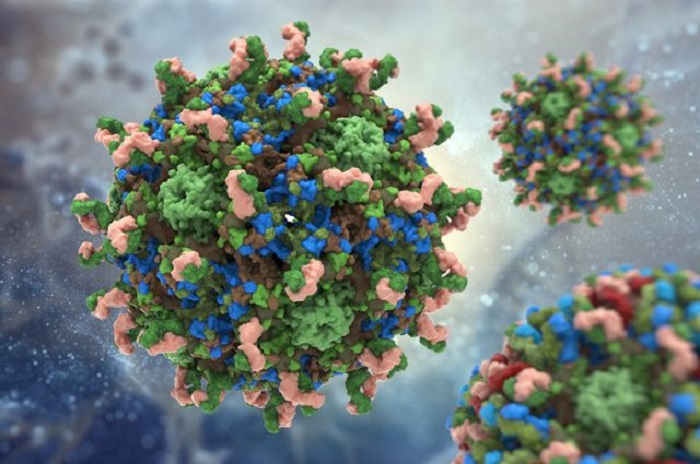
According to the indications (in the presence of a relapse), immunomodulators, antitumor drugs ( Indinol Forto , Promisan, Alfaferon, Isoprinosine , etc.)
Mechanism of action:
- restores the work of lymphocytes, suppressors (in conditions of chronic infection, the resources of the immune system are usually exhausted);
- reduces the formation of cytokines;
- increases the production of interleukins (IL-1, IL-2);
- as a result, the replication of the virus and the formation of its cell wall are inhibited;
- used to prevent the clinical manifestations of HPV.
The effectiveness of the drug
Advantages of Alfaferon:
- completely absorbed when administered intramuscularly;
- the maximum concentration in the blood – within 6-10 hours;
- an equilibrium effect on the body is maintained (up to 12 hours);
- slow, gradual elimination (up to 3 days);
- there is no harmful accumulation (cumulation) after repeated application.
Indications and dosage
The hematopoietic system and neoplasms of the lymphatic system:
- hairy cell leukemia; dosage: adults – 3 million IU 3 r. in Week; duration – more than six months;
- myeloma (after initial treatment, during remission, as maintenance therapy); initial dose -3 million IU, 3 r. in Week. Permissible rate – up to 12 million IU; the course of treatment is unlimited;
- non-Hodgkin’s lymphoma (with a large tumor mass, as a complex treatment with chemotherapy and treatment of follicular lymphoma);
- granuloma mushroom (mycosis of the skin); 5 million IU, 3 r. per week, for 1-1.5 years; initial appointment – 3 million IU every day; the dose increases gradually, the maximum administration is up to 9–12 million IU;
- myloleukemia (in chronic forms of malignant tumors of the blood and bone marrow); daily administration of 3 million IU; the dosage is increased every week.
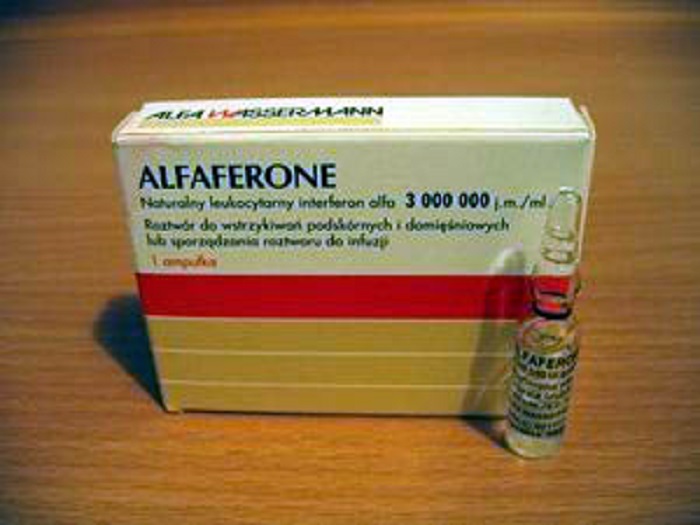
Oncological diseases and secondary immunodeficiencies:
- multifocal Kaposi’s sarcoma (against the background of AIDS and HIV); initial dosage – 3 million IU; gradual increase in dose; administered daily for 2-3 months;
- renal cell carcinoma (kidney cancer); every day, 3-5 million IU; the maximum dose is 9 million IU;
- melanoma (skin cancer, can spread to organs and bones in advanced cases); minimal doses are administered within 3 months, with maintenance treatment 6–9 million IU are allowed every other day, for six months.
Viral diseases:
- active or chronic hepatitis B; the usual dosage is 2.5 – 5 million IU, taking into account the surface area of the body; 3 p. in Week; course of treatment 3-6 months;
- chronic form of hepatitis C (with a decrease in the activity of indicators, in the absence of liver failure); initial appointment – from 3 million IU; then the dosage is increased according to the patient’s indications; complex treatment (in combination with the drug ribavirin in capsules (1000 mg per day, 2 r. per day during meals);
- HPV (genital warts); when administered orally – up to 1 million IU, depending on the affected area; treatment cycle – 3 doses of 3 million IU every other day.
Instructions for use
Alfaferon is introduced:
- intramuscularly (injections are administered into the gluteal or deltoid muscle, the injection site changes each time); subcutaneously;
- a combination of two methods or the drug is injected into the affected area (for example, in the treatment of genital warts);
- intravenously (introduced slowly, over 30-60 minutes, with saline sodium chloride, at the rate of 50 ml per dose of the drug).
The amount of solution – from 3 to 12 units; frequency – daily or 3 p. in Week.
Before starting therapy, it is necessary to establish:
- hemoglobin level;
- the number of platelets, granulocytes;
- the number of hairy cells in the bone marrow;
- parameters are checked regularly.
Due to insufficient effectiveness, the doctor may cancel (replace) the drug; with positive dynamics, additional treatment is possible within 2-3 months.
Side effects
At the beginning of treatment, symptoms are possible (their intensity is temporary, in the following days the signs of malaise disappear):
- chills;
- fever;
- headache;
- nausea to vomiting, loss of appetite;
- indigestion (diarrhea);
- asthenia.

Alfaferon is a drug with high biological activity; possible manifestations of side effects:
- disruption of the heart and blood vessels (lowering pressure, arrhythmia);
- effects on the nervous system (drowsiness, impaired consciousness);
- functional changes in the liver (partial hair loss, dry skin, itching, rashes);
- allergic reaction at the injection site (redness, itching).
Overdose
Cases of overdose have not been identified. In the event of severe adverse reactions, treatment is temporarily interrupted. In the future, the dosage is adjusted taking into account the individual tolerance of Alfaferon.
In oncological diseases, due to the rapid progression of the disease and severe concomitant symptoms, the drug is canceled by the doctor. Treatment in these cases is symptomatic.
Contraindications and precautions
- pathology of the heart and vascular disease;
- kidney and liver diseases (acute or chronic insufficiency, cirrhosis, chronic hepatitis);
- epileptic seizures;
- dysfunction of the thyroid gland.
With extreme caution, the drug is used:
- during pregnancy (in the 1st trimester it is prohibited);
- with natural feeding, feeding is interrupted;
- with recent strokes and heart attacks;
- with violations of the function of hematopoiesis (blood clotting);
- women of reproductive age are advised to use contraceptives (pregnancy is contraindicated);
- elderly patients (especially in combination with sedatives); children under 18 years of age.
Before and throughout the course of treatment are carried out:
- laboratory tests (examination of liver function, the state of electrolytes);
- monitoring the state of the heart (electrocardiogram);
- a complete biochemical and clinical blood test.
Interaction with other drugs and alcohol
Combined treatment:
- with renal cell carcinoma, Viblastin is prescribed (0.1 mg per kg of body weight);
- in chronic hepatitis C, Ribavirin is taken in parallel (up to 1200 mg per day);
- hypnotic drugs with a sedative effect and analgesics are prescribed with caution.
It is forbidden:
- to prepare a solution for injection, use 5% glucose;
- independently use other drugs without the recommendation of a specialist;
- drink alcoholic beverages during treatment.
Terms and correct storage
Keep the drug in a dark place out of the reach of children); better in the refrigerator, in a special sealed container).
The recommended temperature regime is from 2 to 8 °С.
The shelf life of the funds is no more than 2 years (the restrictions are clearly stated in the instructions). An open ampoule can be stored no more than 12-24 hours.
Holiday conditions
Alfaferon can only be purchased with a doctor’s prescription.
Means analogues
- Algeron (for the treatment of hepatitis C, complex treatment).
- Binnoferon alpha (broad spectrum of action).
- Viferon (chronic hepatitis of all kinds in children and adults).
- Wellferon (a mixture of subtypes of human interferon alpha ).
Feedback from doctors and patients
Leading immunologists, therapists warn that in the treatment of acute respiratory infections, influenza, this drug, like other interferons, is not advisable to prescribe, their effectiveness has not been proven.
The reviews are contradictory, but there are few negative ones, more often there are positive (“helped a lot”, “just saved”) and neutral assessments (“so far no sensations”, “no changes are visible”). But experts note that the effect is possible only with long-term systematic use of the drug.
In conclusion, it should be noted that Alfaferon has established itself as an effective active remedy against many autoimmune pathologies. The only caveat is that it can only be used as directed by a doctor, after a correct diagnosis, taking into account the clinical picture and the risks of consequences and contraindications.


